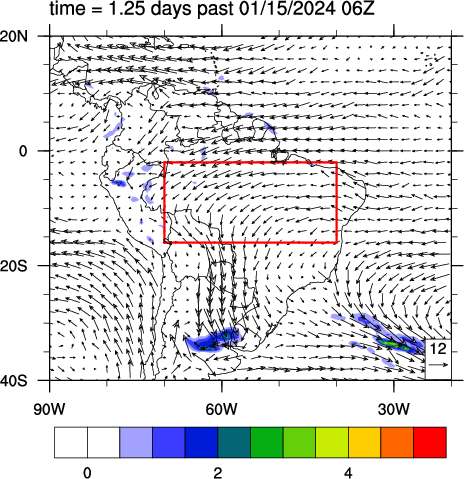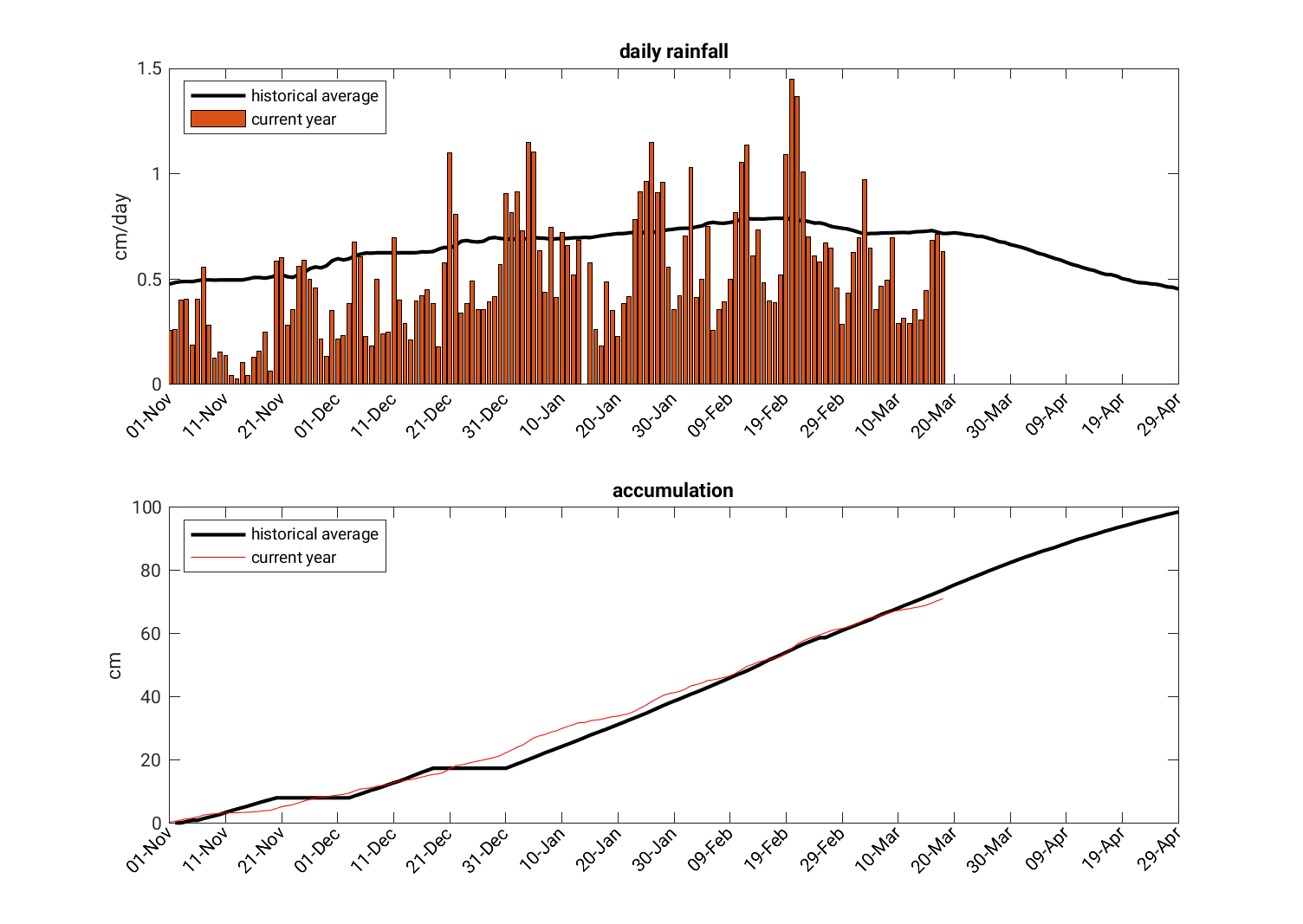The maximum precipitation moves from the northern end of South America in the Southern Hemisphere’s winter to the central Amazon river basin in the Southern Hemisphere’s summer (November – March). That is monsoon season in South America and brings rainfall to much of the Amazon rainforest.
Forecast for wind and precipitation
This animation shows the forecast of precipitation (color shading) and horizontal winds at 850 hPa, which is about 1.5 km above sea level. The precipitation is the accumulation over the previous 6-hour period, in millimeters (1 inch = 25 mm), and winds are measured in m/s (1 m/s = 2.2 miles per hour). This is from a single deterministic forecast. The red box outlines the region over which the total accumulation of rainfall for this season (shown below) is averaged.

All forecast data is from the Global Ensemble Forecast System (GEFS) of the U.S. National Centers for Environmental Prediction (NCEP). All forecasts use an initial atmospheric state at the time indicated on the plot (note that 00Z is midnight Universal Coordinated Time, which is 8 pm the previous day in central Brazil (Manaus), Australia or 7 pm in New York [EDT]).
Seasonal accumulation
The below plots show the daily rainfall and the total seasonal accumulation of precipitation for central South America (70-40W, 16-2S), compared to the historical average.

this was helpfull thanks!